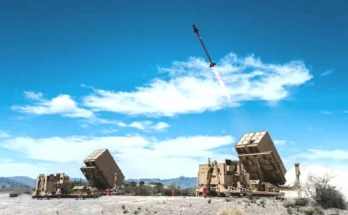by Shaun McDougall, Military Markets Analyst, Forecast International.
President Trump and congressional leaders reached an agreement that will keep the U.S. government operating at FY17 funding levels through mid-December. The continuing resolution (CR), part of a broader legislative package that also included a three-month increase to the debt ceiling and nearly $8 billion in hurricane relief funding, was signed into law on September 8. Republicans had been pushing for a longer extension to the debt ceiling, but the agreement sets up critical votes on both the budget and the debt ceiling in December.
The Pentagon is no stranger to continuing resolutions, which have become the norm over the past decade. CRs extend funding at the previous year’s levels, meaning that programs are left with misalignments in funding levels. The Pentagon is also unable to launch new start programs. CRs typically last only a few months, but the 2017 fiscal year was more than half over by the time Congress passed a budget.
Occasionally, a CR may include funding exceptions, or “anomalies,” for certain programs that are either of critical importance, or which could be particularly harmed by the limitations of a CR. For example, a CR during the FY17 budget process contained anomalies for the Columbia-class ballistic missile submarine and the KC-46A tanker, and multiyear contracts for Apache and Black Hawk helicopters.
In August the Pentagon sent the White House lists, obtained by InsideDefense.com, of planned production increases and new start programs that would be impacted by a CR in hopes of obtaining funding exemptions. Among the list of existing programs that would be impacted in first quarter of FY18 were a $69.8 million increase for the Columbia-class ballistic missile submarine, a $68.4 million increase for the Virginia-class submarine, a $129.4 million increase for the Joint Light Tactical Vehicle (JLTV), and an $88.3 million increase for the B61 nuclear bomb. Funding for new start programs impacted in the first quarter includes $447.6 million for the Armored Multi-Purpose Vehicle (AMPV), $74.3 million for Gray Eagle modifications, $46.8 million for a Special Operations Command dry combat submersible, and $41 million for modifications to the U.S. Army’s High Mobility Artillery Rocket System (HIMARS) fire control system.
There were also whispers on the Hill that lawmakers were considering anomalies for missile defense programs, in light of recent North Korean missile and nuclear tests. In the end, however, the CR adopted by Congress and signed by the president did not contain any funding exemptions for defense programs.
Despite the three-month cushion provided by the CR, Congress still faces an immense challenge of reaching a deal on the FY18 budget. The budget request was essentially a nonstarter with its defense increases being offset by steep cuts to domestic programs. The Budget Control Act’s spending limits also remain in place, limiting options for bolstering the Pentagon’s budget.
A full repeal of the spending caps will not happen, as Congress has repeatedly demonstrated its inability to reach such a deal. It is possible that lawmakers could pass a compromise agreement to provide partial relief from the BCA caps, similar to a pair of short-term agreements that provided additional funding between FY14 and FY17. The Pentagon’s Overseas Contingency Operations account, which is not subject to budget caps, will surely come into play as well. The budget process is complicated by a crowded legislative agenda that also includes issues ranging from tax reform to immigration reform.
 Forecast International’s U.S. Defense Budget Forecast covers every Procurement and RDT&E line item – from the President’s Request to the final joint congressional action – with links to corresponding justification documents (PEDs), historical funding and 5-year forecasts.
Forecast International’s U.S. Defense Budget Forecast covers every Procurement and RDT&E line item – from the President’s Request to the final joint congressional action – with links to corresponding justification documents (PEDs), historical funding and 5-year forecasts.
For 50 years, Forecast International intelligence reports have been the aerospace and defense industry standard for accurate research, analysis, and projections. Our experienced analysts compile, evaluate, and present accurate data for decision makers. FI's market research reports offer concise analysis of individual programs and identify market opportunities. Each report includes a program overview, detailed statistics, recent developments and a competitive analysis, culminating in production forecasts spanning 10 or 15 years. Let our market intelligence reports be a key part of reducing uncertainties and mastering your specific market and its growth potential. Find out more at www.forecastinternational.com




